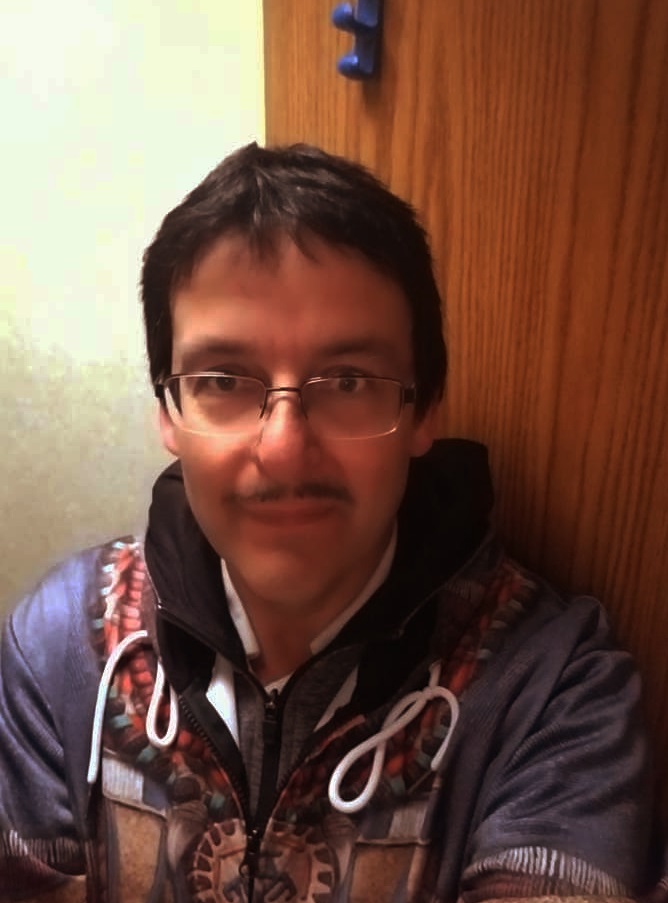
 |
| Spotted Wolf |
Pjila'si (welcome),
Today our people wear factory made clothing while some historic garments are still being made and sold in craft shops and on reserves. Before European influences, clothing was fringed buckskin commonly used by the other woodland tribes in the region. Men wore little besides breechcloths in the summer but switched to fur robes and leggings with the onset of cold weather. Women wore similar robes and long tunics, but during the 1700s, Micmac women began wearing a distinctive pointed cap. Clothing was made from the skins of many mammals, birds and fish. These skins were tanned using animal brains, bird livers and oil, and by smoking. The process involved stretching and working the skins to produce beautiful leather and fur. Bone awls were used to make holes in the leather for sewing. Animal sinew, separated into fine strands, served as thread.
In the 17th century, and probably earlier, men's garments included a loose robe of fur or skin worn blanket-like over the shoulders, open in front and falling to the knees. Leggings of moose (not in Newfoundland until the introduction of the moose), caribou or seal hide were tied at the hip to a leather girdle. The leather girdle also supported a loincloth of very soft skin. Moccasins of moose or seal skin, a pouch, and various accessories completed the clothing.
Women wore similar robes, wrapped around the body under the arms like a bath towel. These robes were belted at the waist and fell to below the knees. Thongs over the shoulders acted as suspenders. Both sexes often wore a pair of sleeves of fur or leather, resembling two halves of a jacket cut down the middle and tied together at center back and front. Women also wore leggings and moccasins and carried pouches. Children wore a smaller version of the adult garments. Babies were wrapped in the softest skins of fox, swan or goose. There were many local variations to these garments depending on individual taste.
Mi'kmaw clothing was always decorated with geometric patterns and designs of birds, animals and humans. Pigments used for painting were red and yellow ochre from the earth, charcoal and ground white shell. These were mixed with fish roe or bird egg yolks. Animal fat was mixed with pigments to paint the body. Animal teeth, bone, claws, and quills were sewn onto clothing, and feathers were always used as ornaments. Men might wear a bird wing on either side of the head. Dyes for decorating quills came from roots, bark, leaves and flowers.
When Europeans came to Turtle Island (North America) our ancestors traded with them, receiving cloth, ribbons and beads in exchange for furs and meat. They found many new ways to use quills and moose hair, and incorporated ribbon and beads into traditional designs.
The Jesuits observed that: "Their clothes are trimmed with leather lace, which the women dress and curry on the side which is not hairy. They often curry both sides of elk skin, like our buff skin, then variegate it very prettily with paint put on in a lace-like pattern, and make gowns of it; from the same leather they make their shoes and strings. The men do not wear trousers, because (they say) they hinder them too much, and place them as it were, in chains; they wear only a piece of cloth over their middle; in Summer they often wear our capes, and in Winter our bed-blankets, which they improve with trimming and wear double. They are also quite willing to make use of our hats, shoes, caps, woolens and shirts, and of our linen to clean their infants, for we trade them all these commodities for their furs."
The Mi'kmaq were very adaptive and innovative and by the 19th century the woman's costume included a beaded peaked cap and a woolen skirt. The man's coat reflected European military uniforms. Thus the European contamination had a profound effect on the traditional garments. Today there is renewed interest in the knowledge and art of making traditional clothing that is mostly used for traditional ceremonies and celebrations.
Welįlin (thank you).
Wantaqo'ti, (peace).
Compiled by Jasen S. Benwah
Local Mi'kmaq Researcher and Saqamaw of Benoit First Nation
Cape St. George, NL.
Website Copyright © 2004 Jasen Sylvester Benwah